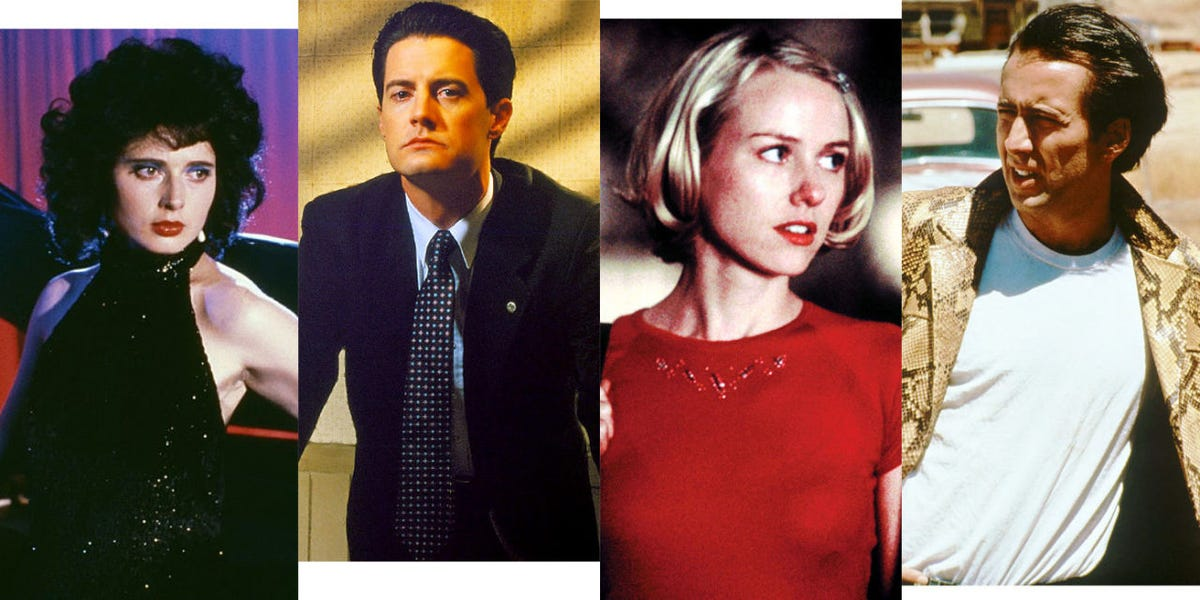David Lynch films stand as a testament to his unparalleled vision in cinema, blending the bizarre and the beautiful to leave audiences in awe. From the haunting scenes of “Eraserhead” to the nostalgic yet unsettling environments of “Blue Velvet,” Lynch’s storytelling is characterized by a distinct cinematic language that challenges viewers’ perceptions. His legacy, notably showcased in the groundbreaking series “Twin Peaks,” continues to resonate through contemporary filmmaking, influencing new generations of artists and filmmakers alike. The cryptic narratives and surreal imagery found in Lynch’s work reflect dualities that resonate deeply with the human experience, making his films both captivating and disturbing. As we celebrate his contributions, it’s clear that Lynch’s unique ability to explore the uncanny cements his legacy as one of the defining voices in modern cinema.
The world of David Lynch’s creations is one where surrealism and depth coalesce, offering audiences an experience that is both familiar and disarmingly strange. His filmography, including poignant titles such as “Blue Velvet” and enigmatic series like “Twin Peaks,” invites viewers to delve into narratives layered with complex emotions and dark undercurrents. By pioneering a new artistic language in film, Lynch invites audiences to question reality and their perceptions, establishing him as a pivotal figure in the cinematic landscape. His capacity to depict the bizarre aspects of everyday life through personal yet collective themes ensures that his works remain relevant and thought-provoking. As we reflect on the unique contributions of this esteemed director, it becomes essential to explore the broader implications of his artistic vision and the subsequent influence on the realms of film and television.
Exploring the Legacy of David Lynch Films
The legacy of David Lynch films is steeped in a unique blend of visual storytelling that invites viewers into a world where the familiar is juxtaposed with the bizarre. Lynch’s ability to weave together complex narratives that often challenge viewers’ perceptions has cemented his reputation as one of cinema’s most innovative directors. A prime example of this is his 1986 classic “Blue Velvet,” which turns the idyllic facade of small-town America into a canvas for horror and intrigue. By exploring themes of voyeurism and the duality of human nature, Lynch pushes the boundaries of traditional storytelling, creating a cinematic language that resonates with audiences well beyond the initial viewing.
Furthermore, films like “Twin Peaks” showcase Lynch’s talent for merging television and film in ways that were groundbreaking at the time. His exploration of Americana, punctuated with surrealism and deep psychological insight, allows a multi-layered understanding of human experiences and emotions. This complexity has led to a cult following, with fans continuing to analyze and debate the meanings behind his works. Lynch’s contributions have redefined what it means to engage with a narrative, inspiring generations of filmmakers to break from conventional frameworks and pursue their artistic visions.
The Enigmatic Style of Lynch’s Cinematic Language
David Lynch’s films are renowned for their distinctive cinematic language, characterized by surreal imagery, nonlinear storytelling, and a haunting score. This approach creates an atmosphere that is both unsettling and mesmerizing, captivating audiences and inviting them to dive deeper into the narrative. In cult favorites like “Eraserhead,” Lynch’s use of stark contrasts, unusual sound design, and dreamlike sequences encapsulates a sense of unease that lingers long after the credits roll. This film, released in 1977, stands as a testament to Lynch’s ability to create a visceral experience that transcends traditional filmmaking techniques and delves into the subconscious realms of fear and desire.
Moreover, Lynch’s influence can also be seen in the way he utilizes ambient soundscapes to enhance emotional responses. Films like “Mulholland Drive” further exemplify this, as practical sound effects and haunting scores contribute to an immersive experience that defies logical interpretation. His ability to evoke feelings of nostalgia while simultaneously unsettling viewers creates a push and pull that keeps audiences on the edge of their seats. As critics and fans alike attempt to decode Lynch’s style, it becomes clear that his films engage with a familiar yet strange cinematic language that continuously evolves, inviting new interpretations and discussions.
The Enduring Appeal of Lynch’s Works
The allure of David Lynch’s films endures, captivating new generations of moviegoers while maintaining a cherished place in cinematic history. The blend of gripping narratives with psychological depth propagates a sense of curiosity and intrigue that is unmatched. Lynch’s early work, particularly films like “Blue Velvet” and “Eraserhead,” often shatters the comforts associated with the American Dream, exposing the darkness that lurks beneath the surface. This exploration of duality speaks to audiences on multiple levels, stimulating discussions about societal values and personal identities. Lynch’s artistry, which oscillates between horror and beauty, offers an experience that is not only cinematic but also profoundly intellectual.
In addition, Lynch’s innovative storytelling techniques and visual aesthetics have contributed to a resurgence of interest in his work following his passing. Screening events and retrospectives, like those organized by the Harvard Film Archive, foster communal discussions and analyses of films like “Twin Peaks” and “Wild at Heart.” These gatherings not only underscore the cultural impact of Lynch’s oeuvre but also encourage audiences to engage with the emotional and psychological layers present in the narratives. As cinematic styles continue to evolve, Lynch’s unique contributions to the industry stand as vital reference points for future filmmakers, ensuring that his legacy will shape the landscape of cinema for years to come.
The Impact of ‘Blue Velvet’ on Modern Cinema
“Blue Velvet” remains one of David Lynch’s most significant contributions to cinema, often credited with paving the way for a new era of daring narrative cinema. Released in 1986, the film’s unsettling examination of the darkness underlying suburban America not only shocked audiences but also influenced countless filmmakers. The juxtaposition of innocence and evil within the film serves as a catalyst for exploring complex themes of voyeurism, identity, and the duality of human nature. Reviews at the time described it as electrifying and provocative, highlighting Lynch’s skillful manipulation of sound and imagery to create suspense and push viewers out of their comfort zones.
Beyond its immediate impact, “Blue Velvet” has paved the way for a genre of films that delve into the uncanny, expanding upon themes introduced by classic noir. Its bold narrative style and cinematic language continue to inspire contemporary filmmakers who seek to challenge norms and experiment with visual storytelling. Lynch’s unapologetic vision encourages a conversation about the darker aspects of society, revealing that what lies beneath the surface is often more complex than it appears. The film not only solidifies Lynch’s position as a cinematic innovator but also serves as a reminder of the power of film as a medium for social critique and exploration.
The Cultural Significance of ‘Twin Peaks’
“Twin Peaks” is not just one of David Lynch’s most beloved works; it is a cultural phenomenon that has redefined the television landscape. Upon its debut in 1990, the series challenged the conventional formats of narrative storytelling in television, blending elements of mystery, horror, and drama in a manner that had not been seen before. Lynch’s exploration of small-town dynamics and the psychological complexity of its characters opened new avenues for character development and plot intricacy in serialized storytelling. The show introduced a dreamlike atmosphere, leaving audiences captivated and often confused, eager to engage with its intricate web of narratives.
The series’ return in 2017 with “Twin Peaks: The Return” reignited conversations around its impact on modern television and cinematic storytelling. Lynch’s unique way of combining surrealism with mainstream media has influenced numerous shows and filmmakers seeking to emulate his pioneering style. The legacy of “Twin Peaks” reflects not only Lynch’s talent for storytelling but also his understanding of cultural influences, delving deep into Americana while simultaneously drawing upon universal themes. As a touchstone for discussions on narrative complexity, audience engagement, and cinematic innovation, “Twin Peaks” affirms Lynch’s enduring relevance in both film and television, ensuring his impact will be felt for generations.
Cinematic Techniques in Lynch’s Filmmaking
David Lynch’s filmmaking is synonymous with a variety of innovative techniques that defy conventional storytelling. His artistry lies in the meticulous construction of visual scenes that evoke emotional responses through stark contrasts and unexpected imagery. In films like “Eraserhead,” Lynch employs black-and-white cinematography to create a haunting atmosphere that draws viewers into the protagonist’s troubled psyche. His ability to play with shadows and light allows audiences to experience a sense of discomfort, strengthening the narrative’s emotional resonance and engagement. Through these techniques, Lynch forges a connection between the viewer and the uncanny landscapes presented in his films.
Moreover, Lynch’s distinctive sound design plays a pivotal role in shaping the audience’s experience. His use of ambient sounds, coupled with haunting scores, enhances the surreal quality of his narratives, immersing viewers into the dreamlike realms of his storytelling. For instance, the clamoring noises and distorted sounds in “Blue Velvet” amplify its themes of violence and voyeurism, further enhancing the unsettling nature of the film. By blending striking visual elements with intricate soundscapes, Lynch succeeds in creating a uniquely immersive experience that resonates with audiences, encouraging them to question their understanding of reality and narrative structure.
Reflecting on Lynch’s Artistic Influence
The death of David Lynch has evoked a profound reflection on his artistic influence within the film industry. Renowned for his unconventional approach to storytelling, Lynch has inspired an array of filmmakers who seek to emulate his distinctive style. His exploration of the human psyche and the blending of surreal elements with everyday life has profoundly impacted the way narratives are constructed in modern cinema. Filmmakers such as Quentin Tarantino and Charlie Kaufman frequently draw upon Lynchian themes of absurdity and the uncanny, showcasing the indelible mark Lynch has left on cinematic storytelling.
As film festivals and retrospectives celebrate his contributions, it becomes evident that Lynch’s work transcends mere entertainment; it engages audiences in a dialogue about identity, societal issues, and the nature of reality itself. The term “Lynchian” has transcended beyond descriptions of his filmmaking style, encapsulating an entire genre of film that embodies his unique blend of surrealism and psychological depth. As scholars and critics delve into Lynch’s films, they continue to discover layers of meaning and artistic nuances that fuel discussions about the landscape of independent cinema and its future trajectory.
Reassessing Lynch’s Work in Filmmaking
In the wake of David Lynch’s passing, there is a renewed focus on reassessing his extensive body of work and the impact it has had on both filmmakers and audiences. Lynch’s films, from the deeply unsettling “Eraserhead” to the mind-bending narratives of “Mulholland Drive,” invite a critical examination of the themes and styles he employed. As we reflect on his legacy, it’s essential to recognize how Lynch challenged the conventions of narrative and visual storytelling, encouraging a deeper understanding of the human experience through his work. Many viewers find themselves drawn back to Lynch’s films, seeking new interpretations and insights that resonate with their own experiences.
Moreover, Lynch’s intricate amalgamation of sound, visual style, and narrative complexity has inspired a generation of modern filmmakers to explore their creative boundaries. Works that echo his influence can be seen in various contemporary genres, as creators seek to replicate the emotions and reactions elicited by his completely unique cinematic approach. As we reassess Lynch’s artistic contributions, the conversation surrounding his films will undoubtedly evolve, leading to fresh perspectives that celebrate his genius and impact on cinema left in the years to come.
Frequently Asked Questions
What makes David Lynch films like ‘Blue Velvet’ and ‘Eraserhead’ so influential in cinema?
David Lynch films, notably ‘Blue Velvet’ and ‘Eraserhead’, have cemented their place in cinematic history due to their unique exploration of the human psyche and the juxtaposition of beauty and horror. Lynch’s trademark ‘cinematic language’ challenges viewers, blending surreal imagery with emotional depth, making them timeless pieces that resonate across generations.
How has ‘Twin Peaks’ impacted the television landscape?
‘Twin Peaks’, a pivotal series by David Lynch, revolutionized television with its complex narrative and atmospheric storytelling. It introduced a blend of surrealism and mystery that paved the way for future shows, proving that television could achieve a cinematic quality and thematic depth previously thought exclusive to film.
What themes are prevalent in David Lynch’s films such as ‘Blue Velvet’ and ‘Wild at Heart’?
David Lynch’s films often delve into themes of darkness hidden beneath the surface of normalcy. In ‘Blue Velvet’, Lynch illustrates the sinister aspects of suburban life, while ‘Wild at Heart’ combines love with violence, showcasing the dual nature of human experiences. This exploration of contrasting themes forms a significant aspect of Lynch’s legacy.
What is the significance of ‘Eraserhead’ in David Lynch’s body of work?
‘Eraserhead’ is significant in David Lynch’s oeuvre as it marks his first feature film, showcasing his distinctive style. The film’s surreal narratives and striking visuals laid the groundwork for Lynch’s subsequent works, establishing him as a master of creating unsettling atmospheres that continue to influence filmmakers today.
How do David Lynch’s films reflect his artistic approach?
David Lynch’s films reflect a deeply personal artistic approach that fuses visual artistry with storytelling. His use of dream logic, captivating imagery, and innovative sound design creates a ‘Lynchian’ experience that transcends conventional filmmaking, allowing audiences to engage with the thematic complexities of his narratives.
In what ways does the term ‘Lynchian’ apply to modern cinema?
The term ‘Lynchian’ describes a quality of surreal, unsettling elements within a narrative that subverts reality. It has been adopted in modern cinema to categorize films that echo Lynch’s impact, incorporating his themes of duality and the uncanny, showcasing films that challenge viewers’ perceptions in innovative ways.
What unique elements define the cinematic language of David Lynch’s films?
David Lynch’s cinematic language is characterized by a blend of surrealism, nonlinear storytelling, and a haunting ambiance. His films, such as ‘Blue Velvet’ and ‘Twin Peaks’, utilize evocative imagery and soundscapes to evoke emotion, creating a unique viewing experience that encourages deep reflection and interpretation.
Why is it important to experience films like ‘Eraserhead’ on the big screen?
Experiencing films like ‘Eraserhead’ on the big screen is crucial as the theatrical setting enhances the film’s rich visual and auditory components. Lynch’s meticulous attention to detail in cinematography and sound design is best appreciated in a cinema, where the full sensory experience can draw viewers into the film’s striking world.
How do David Lynch’s films challenge traditional narrative structure?
David Lynch’s films challenge traditional narrative structure by employing a dreamlike logic where linear storytelling is often abandoned in favor of fragmented sequences and ambiguous interpretations. This approach invites viewers to engage more deeply, forming personal meanings that deviate from conventional cinematic expectations.
What aspects of Americana are explored in David Lynch’s work, particularly in ‘Twin Peaks’?
In ‘Twin Peaks’, David Lynch explores Americana through a lens that reveals the deceptive tranquility of small-town life. The show juxtaposes idyllic settings with dark secrets, reflecting Lynch’s fascination with rural 1950s America and critiquing the myth of the ‘American Dream’, thus crafting a narrative rich in cultural commentary.
| Aspect | Details |
|---|---|
| Impact of David Lynch’s Films | Lynch’s films challenge viewers with a mix of beauty and darkness, creating a unique cinematic experience. |
| Key Works | Notable films include ‘Blue Velvet’, ‘Mulholland Drive’, and the influential series ‘Twin Peaks’. |
| Screenings | The Harvard Film Archive screened ‘Eraserhead’, ‘Fire Walk With Me’, and ‘Wild at Heart’ to celebrate Lynch’s legacy. |
| Cinematic Style | Lynch’s work is recognized for its unique blend of the familiar and strange, often evoking strong emotions from audiences. |
| Cultural Significance | Lynch is regarded as one of the premier American filmmakers, with his style contributing to the evolution of cinema and television. |
Summary
David Lynch films have left an indelible mark on the world of cinema, merging the familiar with the strange to create a distinctive narrative experience. His works, including iconic titles such as ‘Blue Velvet’ and ‘Twin Peaks’, showcase his ability to blend beauty with darkness, captivating audiences over generations. With the recent screenings at the Harvard Film Archive, Lynch’s unique cinematic language continues to resonate, inviting viewers to explore the depths of their own perceptions and emotions. As we reflect on his legacy, it’s clear that David Lynch films will remain essential references in the study of American cinema.




